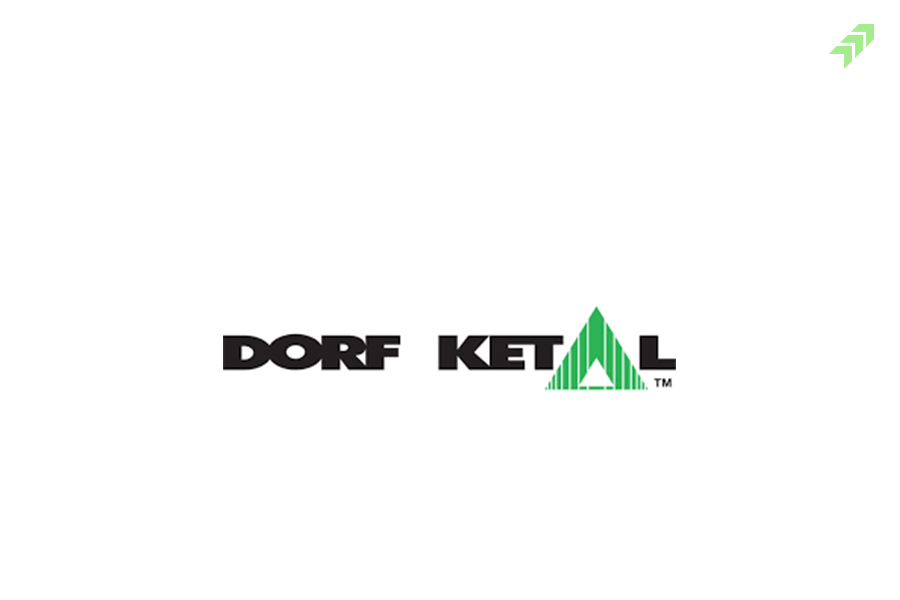Using the TradingView chart system for analyzing the movement of individual stock or the entire market is not possible without applying the indicators that are integrated into this software. There are various types of indicators and technical tools available in the TradingView that you can use for analyzing the stock price movement and market trends.
Also Read: How to Set Up, Adjust, Save, Clear, Reset TradingView Chart Settings
Though you can find the list of unlimited indicators in the TradingView chart applying and interpreting all the indicators is not possible for anyone. You should know about the top best or most widely used indicators that are usually applied by traders. Hence, here we going to discuss about the top technical indicators that are integrated into TradingView.
Top 10 Best Indicators in TradingView:
- Moving Averages
- MACD & Crossovers
- Relative Strength Index
- FBI Retracements
- Bollinger Bands
- Volume Indicators
- Volatility Index Indicator
- Supertrend Indicator
- Oscillators& Swings
- Stochastic Momentum
#1 Moving Averages in TradingView
Moving Averages are one of the most used indicators in TradingView giving the signal of price movement of stock or market index for the past few days as the range selected. There are different types of moving average indicators you can apply in TradingView like Simple Moving Average (SMA), Exponential Moving Average (EMA) and Weighted Moving Average.
In Simple Moving Averages, the parameters can be selected for 20-days, 50-days and 200-days to draw the moving average line along with the price chart. The Simple moving average with 50-day and 200-days period SMA is used by investors for long-term investments to medium-term trading. Traders also use it for intraday trading or for swing trading.
Also Read: How To Use Best Moving Averages for Intraday or Day Trading
While the Exponential Moving Average (EMA) is used for short-term trading. In EMA the 9-days and 26-days lines are drawn with the 5-minute and 1-minute charts with the motive to find out stocks intraday trading and short-term swing trading.
Also Read: How to Do Intraday Trading: Best Stocks, Charts & Strategies
Weighted Moving Average (WMA) is another moving average indicator you can apply in the TradingView chart. In WMA, more weightage is given to the recent data that is more relevant compared to past data. In SMA the weightings are equally distributed, but in WAM, while considering the recent trading sessions, weightage is given to the latest data points.
#2 Moving Average Convergence Divergence (MACD)
It is also one of the best indicators in TradingView that traders use to find out through the crossover points of the market index or stock price. The MACD shows the relationship between the two exponential moving averages (EMAs) of a stock price. You can calculate the MACD line by deducting the EMA of 26 days from the EMA of 12 days period.
In TradingView you can apply the MACD indicator, then a 9-days period EMA and MACD line plotted on the bottom or along with the volume charts. The crossover of the MACD line with a single line (EMA line) works as a trigger point to buy and sell the stocks.
Also Read: How to Use Moving Averages in Trading & Convergence Divergence
The crossovers and divergences are the most common methods of interpreting the MACD indicator. You can create a buying position when the MACD line crosses above the signal line and sell if the MACD line crosses below the signal line.
When you apply the MACD indicator, a zero line is also plotted along with the MACD line and EMA line. When these lines cross the 0 line in an upward direction, it means MACD indicates the bullish signal, while when these lines cross the zero line in a downward direction and become negative it means MACD is indicating the bearish trend.
#3 Relative Strength Index (RSI) in TradingView
RSI is one of the most popular momentum oscillator indicators you can apply and use in TradingView. In TradingView, using the RSI, you check whether a market index or a stock is overbought or oversold zone. The RSI line oscillates between the 0 and 100 values and when the RSI is below 30, it means the market or stock is trading in an oversold zone.
Also Read: What is RSI in Trading & How RSI Works? Formula and Strategy
While, when the RSI is above 70, it means the stock or market index is trading in the overbought zone. This indicator can provide you a valuable insight into the momentum direction of the stock, making it one of the best indicators on TradingView. You can use the RSI in TradingView to find out when to enter or exit from the trade positions.
#4 Fibonacci Retracementin TradingView
This is another useful indicator you can use in the TradingView chart. You can draw this tool manually in the TradingView selecting the range or low and high points to find out the retracements levels. The Fibonacci Retracement helps to find out the support and resistance levels of the market index or stock price and shows the levels if the market takes a correction.
The Fibonacci Retracement key ratios are 23.6%, 38.2%, 50%, 61.8%, or 100%, which is calculated when you measure the vertical distances between the low and high points of the stock's price. To draw the Fibonacci Retracement levels on the TradingView chart you can need real-time data of the stock price or market index with tick-by-tick movement.
Also Read: How to Use Fibonacci Retracement for Trading: Setting & Strategy
In TradingView you can choose the trend line drawn between two important points that is the lowest and highest, plotted on a chart. It intersects the horizontal lines that is located at the Fibonacci levels and shows the levels. At the left-hand side of the drawing section, you can find the free-hand tool to draw the Fibonacci Retracement levels in the TradingView.
#5 Bollinger Bands in TradingView
Bollinger Bands is also one of the best and most used indicators in TradingView. It is a useful tool in technical analysis that follows the movement of the price of a stock or market index and uses the standard deviation to tell the volatility of the stock or the market index.
Also Read: Is Technical Analysis Useful or Useless or Enough for Trading
When you apply the volatility index indicator in the TradingView chart, three bands appear showing the support and resistance with the range of volatility of the stock or market index. And when Bollinger Bands swells or moves away from each other it indicates that volatility in the stock price or market index is very high during that period.
Also Read: Bollinger Bands: Indicator, Strategy, Settings& Analysis
Conversely, when the Bollinger Bands come close to each other or contract, it means the volatility in the stock or market is low. The Volatility Index India (VIX), can be measured by the standard deviation that moves when volatility rises or falls. You can apply this indicator in TradingView on various types of financial instruments like equities, commodities,currencies trading, cryptocurrency and any other assets or global market indices traded on the stock exchanges.
#6 Volume Indicators in TradingView
In TradingView you find various types of volume indicators that traders use for intraday trading and long-term investment. The volume indicators in TradingView help to know the level and trend of volume in a particular stock or broader market indices. In TradingView you can find and apply all the popular volume indicators with various tools to analyse the same.
Also Read: Best Volume Indicators for Day Trading & How to Use for Intraday
In TradingView, you can already see the volume bar chart loads at the bottom showing the level of volume on every trading session. However, in the TradingView chart, you can apply various types of volume indicators like Volume Profile Indicator, Volume Price Trend Indicator, volume-weighted Average Price, Volume Weighted Moving Average, Cumulative Volume Index, On-Balance Volume, Money Flow Index and Accumulation/distribution indicators.
With the help of volume indicators, you can find out the level of volume in the stock trading or market index. The strength or volume, the money flow in the market and various other indicators to know the role of volume in stock price movement. Volume plays an important role in technical analysis, hence, traders use the volume indicators in TradingView.
Also Read: Importance of Volume in Technical Analysis: Use & Role in Trading
#7 Volatility Index Indicators in TradingView
Though the Bollinger Bands is already one of the most useful volatility indicators you can apply and use in the TradingView chart. Relative Volatility Index, Donchian Channel, Average Directional Index and Volatility Stop are the various other volatility index indicators that you can apply in the TradingView chart and use to analyse the levels of volatility in the market.
Also Read: Benefits of Investing in the Stock Market: Advantages of Share Market
These volatility index helps to know the level and strength of volatility in the individual stock or market index. You can apply the volatility indicator when there is too much noise in the TradingView candlestick chart patterns. Intraday traders use the volatility indicators to identify when prices are likely to reverse direction, to take advantage of trade.
#8 Supertrend Indicator in TradingView
The supertrend indicator in TradingView is one of the most useful and effective trend-following indicators in TradingView that helps to know the direction of the trend.
The Supertrend indicator in TradingView is developed to identify strong trends as soon as possible when a stock gains momentum in an upside or downside direction. When the stock price or market moves above the indicator curve, then it becomes green and indicates the starting of the uptrend. While, when the price of the stock or market goes below the indicator curve, then the supertrend line becomes red indicating the beginning of the downtrend.
Also Read: Why You Should Invest in the Stock Market: Reasons & Benefits
However, it is also a great tool for traders to find out the trend reversal and measure the volatility in the market. It is simply plotted on the stock price chart or market index and works only with the two parameters - multiplier and period. As it is a trend-following indicator, hence performs well when the market keeps moving in either direction. In sideway trading or choppy markets, the supertrend will not give you the proper signal of buying and selling.
Also Read: What to Know Before Investing in Stocks: 10 Things to Consider
The Supertrend indicator uses the Average True Range (ATR)which plays an important role in identifying the degree of price volatility. You can easily apply a supertrend indicator with default settings of 10 for ATR and 3 for its multiplier during construction. Just like other technical indicators in TradingView, you can use the Supertrend Indicator to capture the trend following movements like breakout or breakdown in the market index or individual stock prices.
Also Read: Top 5 Best Technical Indicators for Intraday or Day Trading
#9 Oscillators & Swings in TradingView
Oscillators are also very popular technical indicators you can apply in the TradingView. RSI, Average True Range (ATR), Technical Ratings, stochastic oscillator, volume oscillator, and price oscillator are the swing-based technical indicators that you can apply in TradingView to identify increased volatility. However, you can use this oscillator indicator to know the price movement and volatility in the market or stock.
You can apply the Average True Range (ATR) in TradingView to know the magnitude and direction of price movement that is expressed as an oscillator. It can signal the increase in the volatility in the stock, but ATR does not give the signal trend direction.
RSI is another oscillator that you can plot in the TradingView chart to find out the support and resistance levels. And stochastic oscillator helps to know the momentum and rate at which the stock price is moving but overlooks the price and volume. However, the stochastic oscillator is one the leading indicators in TradingView gives the indication with early warning of entry and exit from the trade positions to make the trading profitable.
Similarly, there are various oscillators and swing-based technical indicators in TradingView that you can apply with a combination of other top indicators. Using the combination of multiple technical indicators will give you a better and clearer indication of stock price or market index movement and trend helping you to make the right decision for trading.
#10 Stochastic Momentum in TradingView
Just like oscillators in TradingView, you can also find various stochastic momentum indicators to find out the momentum in the stock price or market index. As the name shows, momentum-based technical indicators show the momentum in the stock price and based on the direction and strength of momentum you can create a trading strategy.
A popular stochastic oscillates between 0 and 100, and this indicator oscillates above 80, it indicates the overbought zone. And when it goes below the 20 level, it indicates the oversold zone. However, you cannot use this indicator for the trend reversal. Instead, you can use it for changes in the stochastic oscillator to predict future trend changes.
However, to know the overbought and oversold levels of the stock or market, you can also use another popular momentum oscillator indicator Relative Strength Index (RSI). The MACD line is also a momentum indicator that you can use to know the momentum in the stock with the trend. Similarly, there are various indicators that you can use in TradingView as per your usability and while considering the market conditions you can apply them to the charts.
Summing-up
In TradingView charts there are an unlimited number of technical indicators but all the above listed are the best indicators in TradingView that you can use in technical analysis. Most of the useful and popular indicators are freely available but many of them are paid, which means you have to buy a subscription to TradingView with the option to choose from various plans.
Also Read: Technical Analysis vs Fundamental Analysis: Which is Better
Whatever the indicator or technical tool available in TradingView, it is not possible for everyone to apply all of them on the chart precisely with the right parameters. You need full-fledged technical knowledge about the types of charts, candlestick charts and indicators developed for the different types of market conditions and trends.To make the right decision for trading or investing you need to understand the chart structure in TradingView.
To get full access to all functions and apply the most used indicator in TradingView you need the best trading platform in India, where you also get trading and investing facilities. Moneysukh is right here to offer the best application for trading with TradingView chart and Trade Radar to perform the fundamental analysis and technical analysis to find out the best stocks for intraday trading and long-term investments recommended by market experts.
Also Read: 7 Biggest Mistakes To Avoid While Doing Intraday Trading
Moneysukh to Trade or Invest with TradingView
Moneysukh is one the best discount brokers in India providing the one-stop solution for investing and trading in the equity, commodity and currency markets. You can open your trading account and demat account here and enjoy the best application for trading integrated with TradingView chart and various other financial information of stocks and market data.
The traders looking to trade through Algo-trading can also get online trading software and choose the best intraday Algo trading strategy or pick the most popular & profitable Algo trading strategies as per your risk and the market conditions. Moneysukh provides one of the best algo trading platforms like Trade Tron, FoxTrader, AlgoBulls, Keev, Quantman and TradingView in the industry with all the technical tools to analyse and trade.
Also Read: Types of Risks Associated with Investing in the Stock Market
If you are looking to start trading on Moneysukh through TradingView, you can apply here to open your trading and demat account and enjoy the best trading platform at the lowest transaction fees and other charges with the best pricing in the industry.
Trading and investing with Moneysukh, you will also get tips and recommendations to buy stocks for intraday trading or long-term investment. You will also get here the best option strategies for the bearish or bullish market or can trade in the forex market with quick updates and alerts on your smartphones and mail ID with updated market related data.
Also Read: How to Find Trending Stocks for Intraday Trading: Ten Rules

















